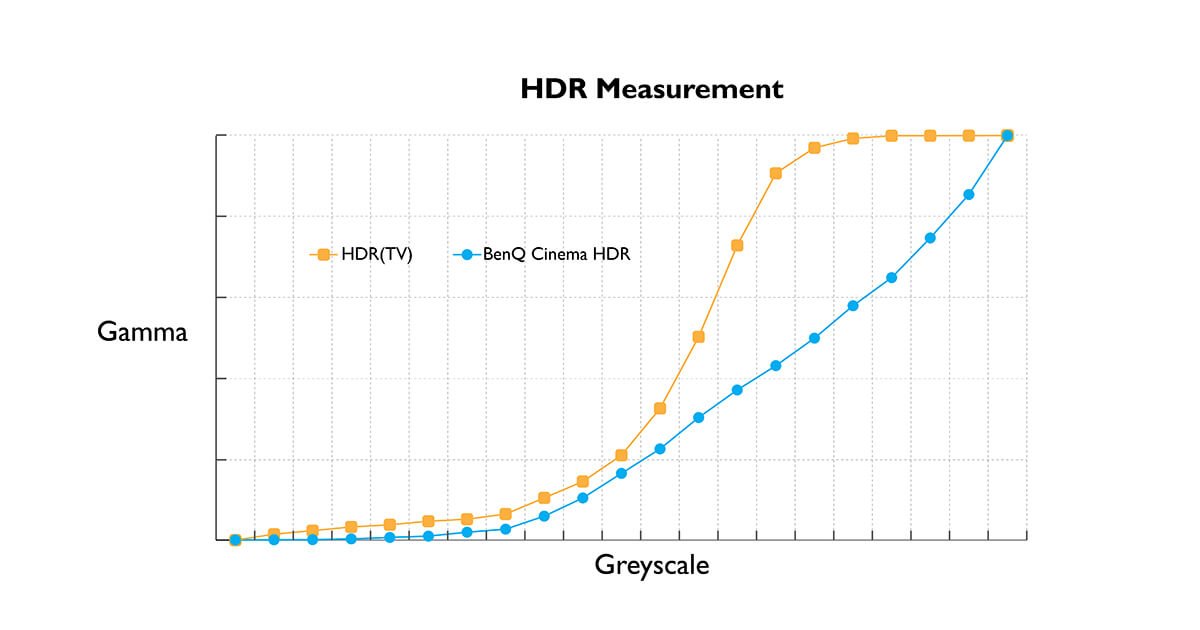Projector
Monitor
Lighting
Digital Display
Job References
This site uses cookies. By continuing to browse the site you are agreeing to our use of cookies, you can also manage preferences.
This site uses cookies. By continuing to browse the site you are agreeing to our use of cookies, you can also manage preferences.
Projector
Monitor
Lighting
Digital Display
Job References
Projector
Monitor
Lighting
Digital Display
Job References
Knowledge Center SupportBenQ’s HDR technology represents a new pinnacle of visual experiences for consumers. To perfectly display HDR quality on BenQ monitors, two proprietary tuning processes are essential: tone mapping and gamut mapping. Furthermore, the exclusive BenQ Cinema HDR mode produces brilliant luminance without overexposing bright scenes while perfectly balancing HDR output for superbly defined dark details.

“Tone” refers to critical color characteristics pertaining to brightness, darkness, and contrast. To display images accurately, the tone of a device must be professionally tuned and its optical characteristics fully considered, which means the source signal must be processed with tone mapping to correlate the correct input code value to the maximum brightness of the display to show HDR tones completely.
“Gamut” refers to the color range that a monitor can display, and it can also be considered as the color reproduction capability of a display. Because the gamut of each display varies, serious distortion can occur if several colors from the input cannot be displayed on the output device. This is why gamut mapping is a critical step during color reproduction.
HDR technology accounts for gamut mapping across different devices. Current HDR applications primarily emphasize compressing the wide gamut into a narrower range, such as mapping Rec. 2020 onto Rec. 709. (Rec. 2020 is an updated international video format standard, providing a significantly wider color gamut with far more colors than the original Rec. 709 standard.) This converting technology utilizes the color processing chip to complete the complicated gamut calculation.
Both of these critical tuning technologies are applied to BenQ’s HDR monitors to help accurately display images with supreme effect, showcasing perfect quality for immersive visual experiences.
In addition to proprietary tone and gamut mapping techniques, BenQ’s HDR monitors are unique in the marketplace in because they offeroffering both HDR and BenQ Cinema HDR modes. Preserving delicate details in dark areas and minimizing overexposure, BenQ Cinema HDR mode matches the high performance of regular HDR at the upper registers of the brightness spectrum for brilliant scenes, while modulating a more finely gradated response in the lower brightness greyscales.

Equally important, BenQ Cinema HDR automatically adjusts the monitor’s color output and color tone, providing fully saturated colorful performance to immerse its user in movies, video games, and other colorful content. This means users of BenQ HDR monitors users can choose between the typical HDTV-style HDR mode or BenQ Cinema HDR mode to customize superb HDR viewing experiences to based on their preferences.

HDR

BenQ Cinema HDR visual effect enhanced

TV HDR strong visual effect
Thanks for your feedback!